
by Gwyn Conaway
Settling into my favorite armchair, I’ve found myself seeking relaxation and comfort at the start of what will surely be an exciting twelve-month turn ‘round the sun. Lounging in my favorite silk housecoat, a bite of Turkish delight and black tea at my side, I opened this year’s first issue of Life for some rather extravagant reading time.
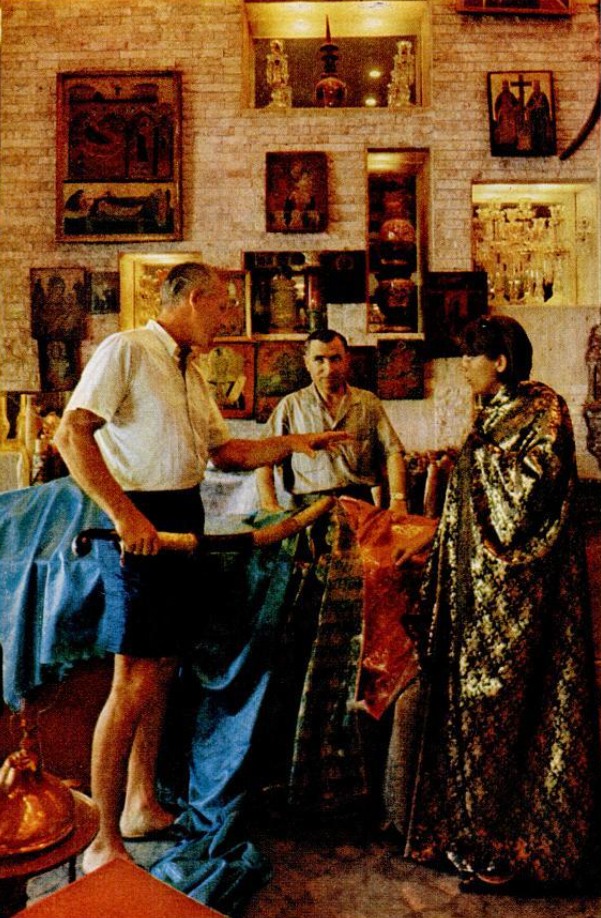
An American couple fawn over the luxurious Damascus silk and gold brocade being sold by a Lebanese man in a market in Beirut.
What do you suppose I found nestled in the pages but evidence that my own extravagance is part of a larger atmosphere! Littered across this issue is a curious return to the lush grandeur of the La Belle Époque, the era at the turn of the century in which we became enthralled with the Ballet Russes and Leon Bakst’s vision of Schéhérazade, Alfons Mucha painted the natural world with feminine mystique, and we dreamed of Istanbul and the Orient Express. The veil of our world had been pulled back just enough for us to hear the mewing notes of the koto from Japan, to smell the scented smokes of hookah from Turkey, and to gaze in wonder at the recently excavated Temple of Apollo in Athens.
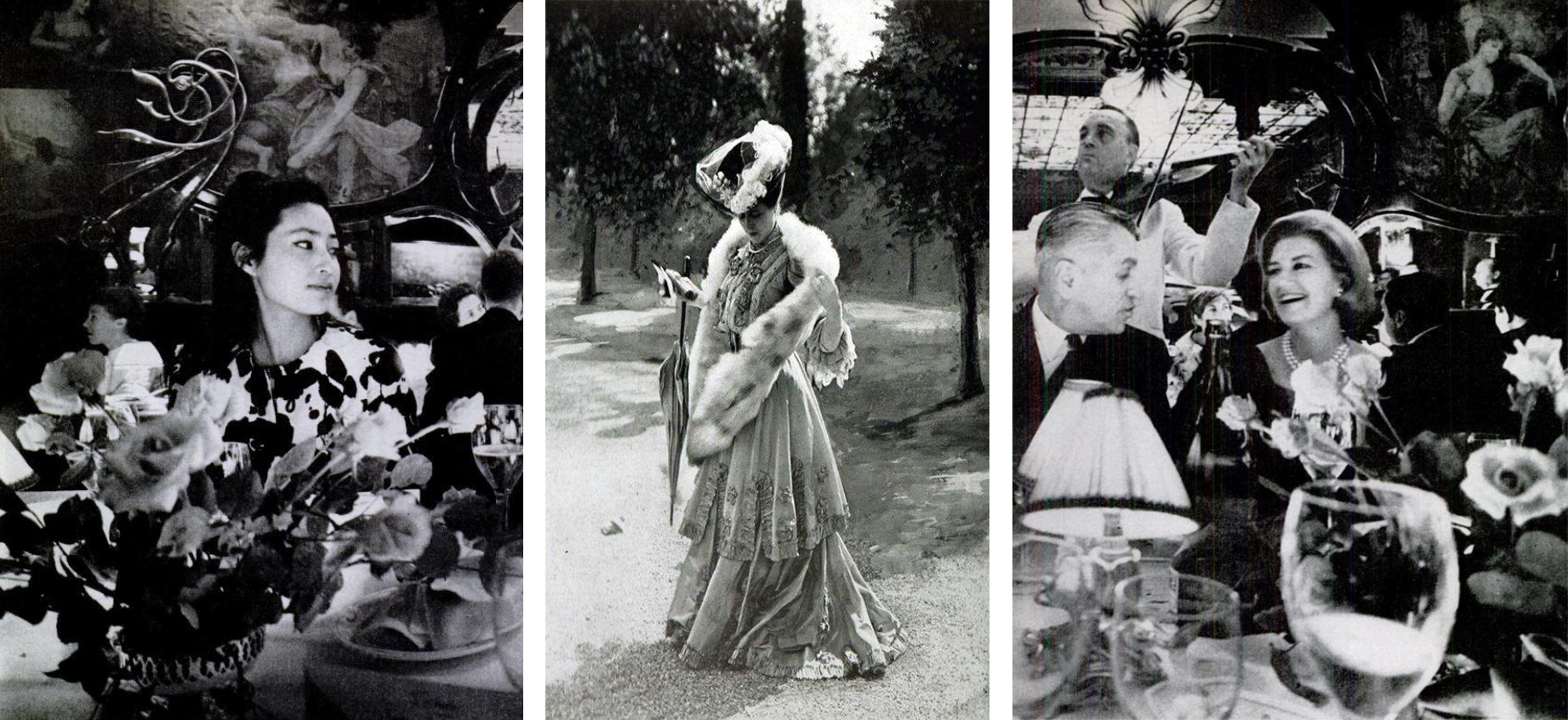
The first and most blatant sign was this astute advertisement for Maxim, a luxurious restaurant in Paris. The lush, organic elements of the restaurant’s interior and the patron in her floral dress perfectly mirror the chaotic beauty that is Art Nouveau and the fashions that accompanied the era. The decadent Parisian promenade dress from 1905-1906, pictured center, is an example of such styles and features not only the hallmark laces, florals, and feathers of the turn of the century, but also a Merry Widow hat fashioned like a tricorn. This, and the gathered ruffled trim at her skirts, is a throwback to the Rococo era of France in the late 18th century. Behind the women seated in the right image, you can sky a Rococo painting, bringing the opulence of the three periods together.
Schéhérazade and Paris stayed with me as I came upon an article about the burgeoning Vegas atmosphere to be found in Beirut. Lebanon was once part of the Ottoman Empire, which has been a fascination of Europe for a thousand years or more. The region was an inspiration to Leon Bakst in his design work, and he lit Paris aflame with his fantastical interpretations of the ancient culture just beyond the veil.

A small selection of costume designs for Schéhérazade by Leon Bakst, 1910.
Of particular note to me was the belly dancer in the subterranean bar of the Phoenician Hotel in Beirut, in which I immediately recognized George Barbier’s illustration of the Ballet Russes’ fantastical production.

Right, Schéhérazade, George Barbier (1913).
This revelation led me to a further inspection of the people in the Beirut photograph series. I was astonished to find the tunic worn by the woman enjoying a mezze of hommos and kibeh resembles Bakst’s scenic design for Schéhérazade.
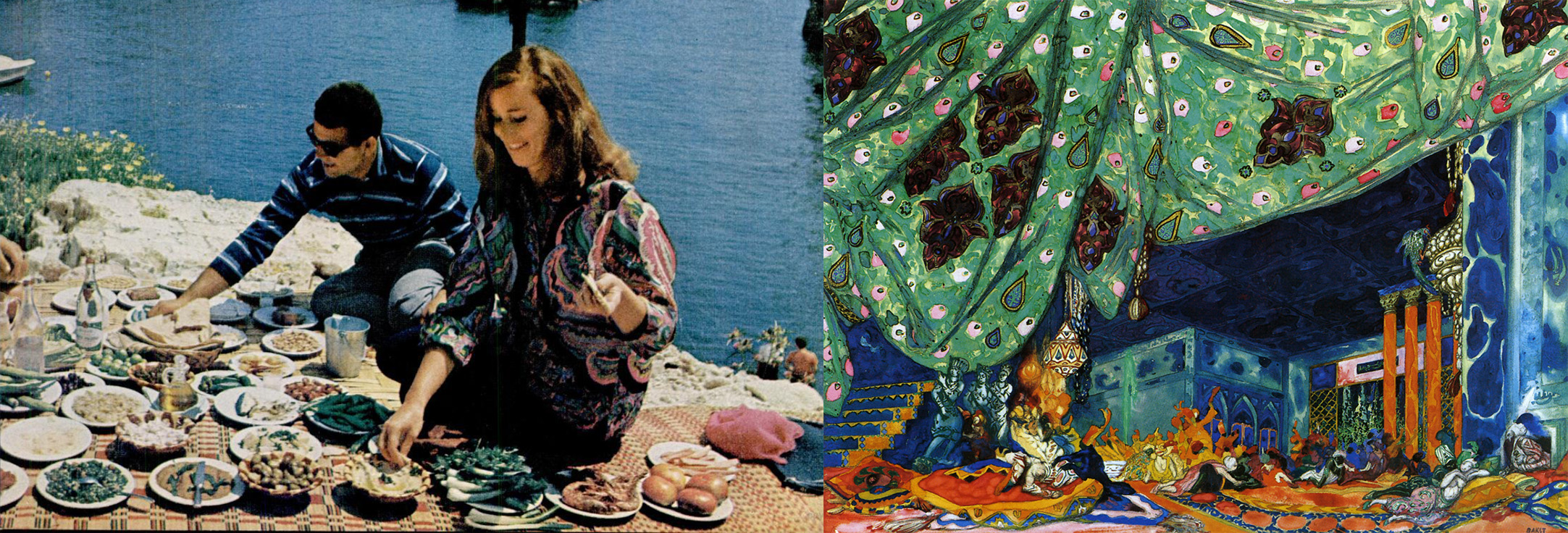
Note the color palette and use of swirling lines and shapes to convey a hazy depth, an other-worldly mystique.
There is indeed a very strong sense of nostalgia taking over the decade, just as there was fated to be. As we race towards the heavens in our Gemini 6, uniform our young women in trapeze dresses and vinyl, and experience a social technological revolution, we find ourselves torn. On the one hand, we yearn for progress, to push forward, to explore. On the other hand, we cling to Mother Nature, to the chaos of beauty, to romance. We are celebrating both things in equal measure. Even this issue of Life shares its pages equally between the two opposing ideals.
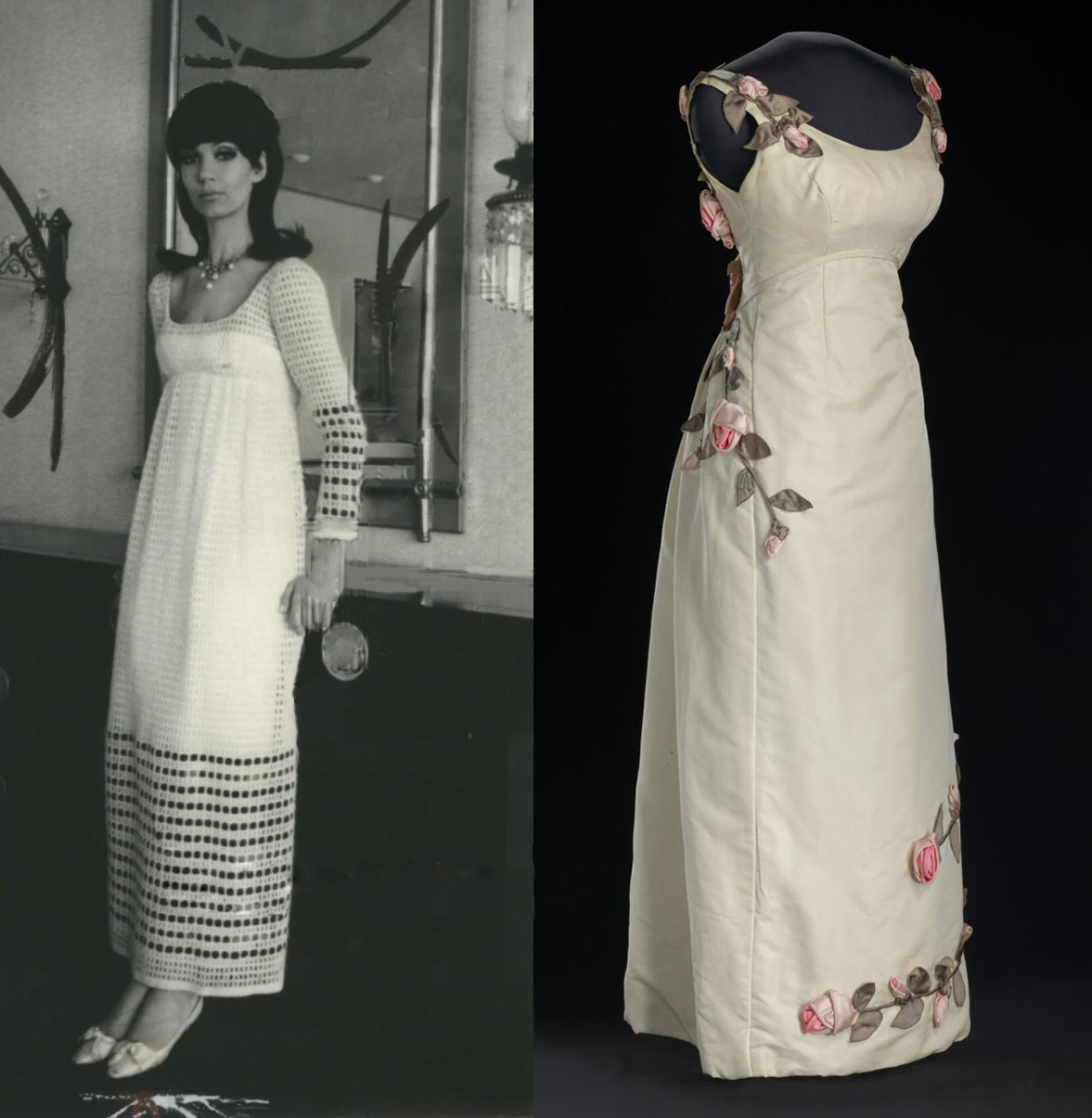
Even within the Neoclassical revival, we see a split personality. Ann Lowe’s floral design on the right, known as the American Beauty dress, is a perfect example of the nostalgia for nature we’re currently feeling, while on the left, we can see an example of orderly geometry, an aesthetic symbol of reason and progress.
This tells me that the distance between our generations is bound to grow, and unrest will continue to boil through the next decade. Our young people are leading us into a new age. For La Belle Époque was also a time of turmoil and division. World War I was on the horizon. The battle for women’s liberation and suffrage in America was being waged at full force. The young sought escape through Mother Nature and loosened propriety thanks to the advent of cocktails and condoms, a shocking lapse in morality as far as the older generations were concerned.
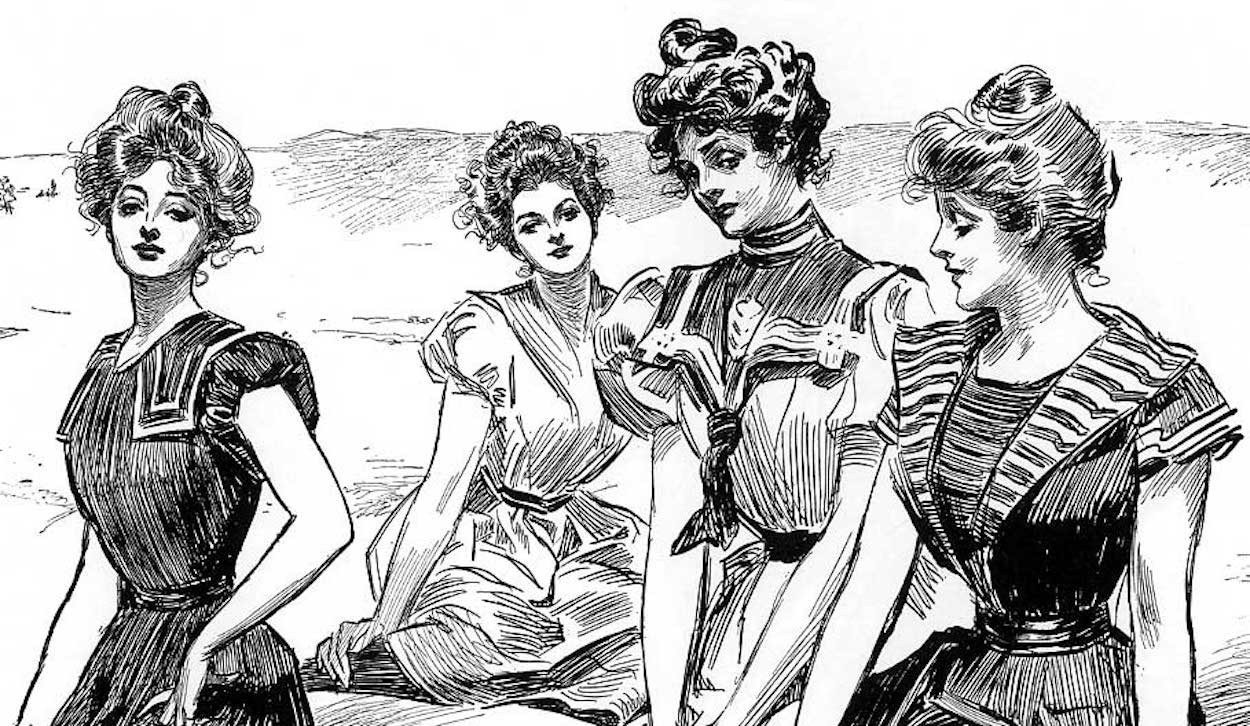
Charles Dana Gibson invented the Gibson Girl, a combination of the voluptuous woman and the fragile lady, which was meant to encapsulate the modern woman at the turn of the century. The dichotomy of her roles is playing out in our own times as well. Striking the perfect balance between the return to nature and the march of progress is a unique struggle for women in fashion today.
This so perfectly mirrors the current state of affairs that I’m shocked I hadn’t noticed it before! The Vietnam War, just like World War I, has inspired a revolution of philosophy, an existential unrest in the youth that has no choice but to bubble up and make itself known through the advent of new fashion, new music, and new ways to perceive the world. The war between Progress and Tradition has always permeated history, but now it is going going to the turf with awe-inspiring style. I will be keeping a close eye on this as we head further into the year.
[Come join us at Portal 55, Galactic Journey's real-time lounge! Talk about your favorite SFF, chat with the Traveler and co., relax, sit a spell…]

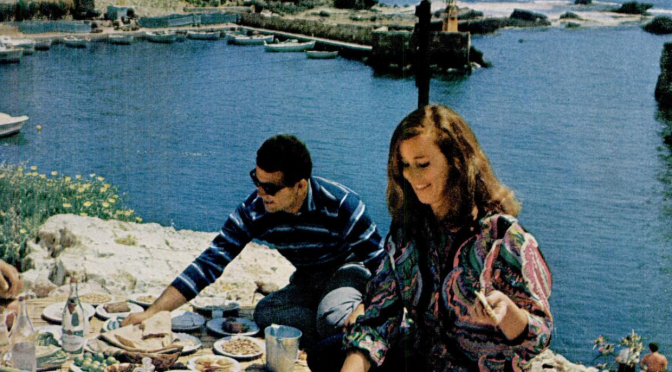

Great article, Gwyn.
Last year, in my interior design article, I mentioned a new fashion boutique in London called Biba which is entirely decorated in the Art Noveau style. I guess that was a harbinger of things to come.
As someone who's a fan and occasional collector of Art Noveau pieces, I welcome this trend. Though I do hope they don't bring back the corset.
Also, if you happen to spot an Art Noveau statue, bust, vase or other objectd'art at a flea market or garage sale, snap it up, because – as an antiques dealer friend told me – Art Noveau objects are about to get a lot more expensive.